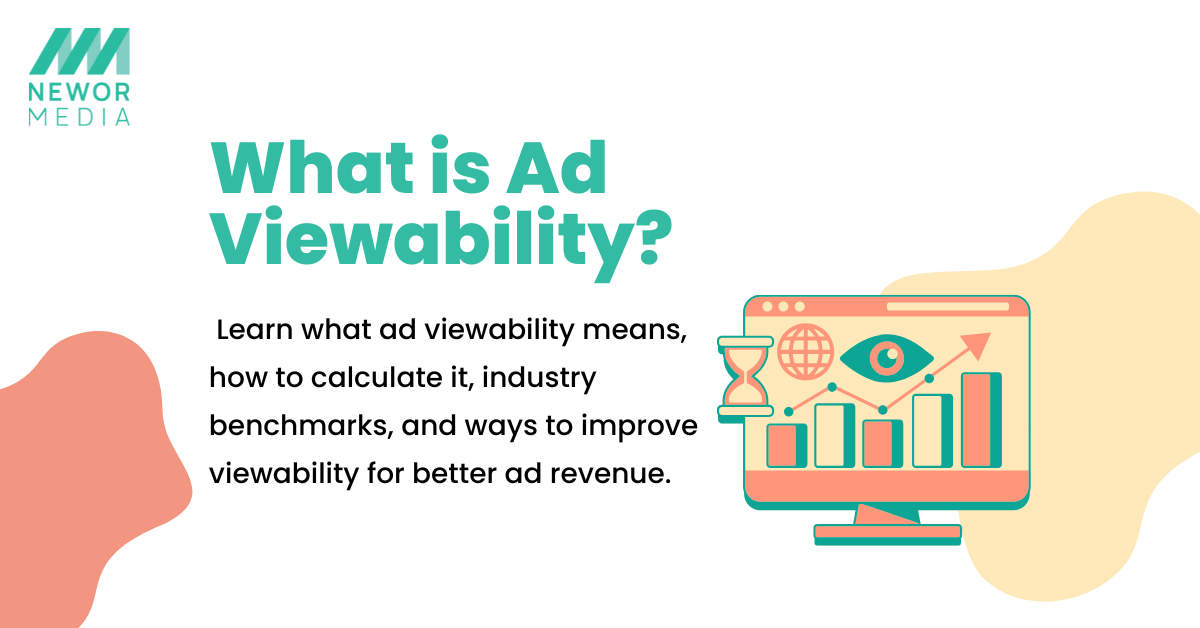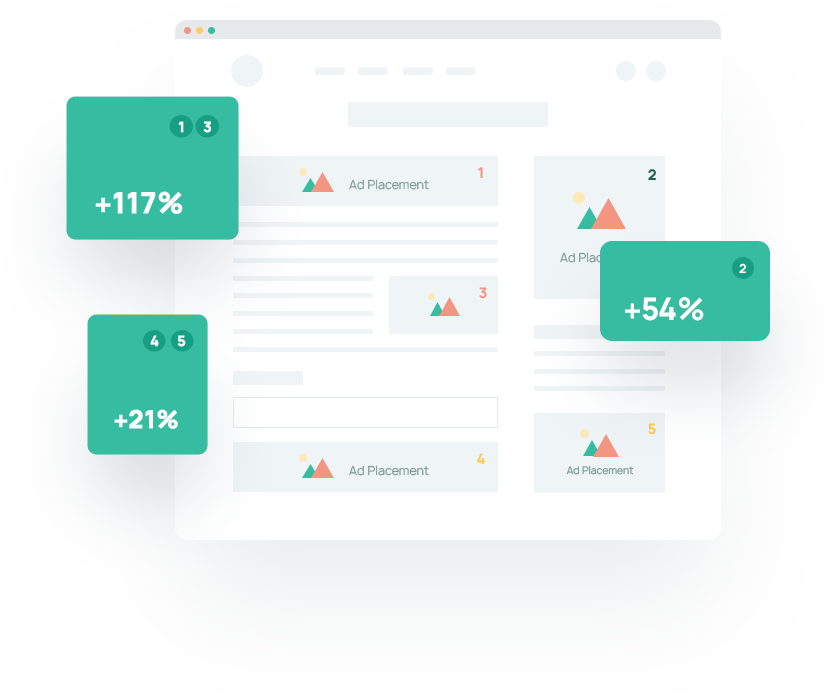Ad viewability is a word that gets tossed around a lot in digital advertising. But for publishers, it is not just another metric, it is directly linked to revenue, advertiser trust, and user experience.
So, what is ad viewability, actually? And more importantly, how can you measure it, improve it, and benchmark your performance? Let’s break it down without the jargon overload.
What is Ad Viewability?
In a nutshell, ad viewability measures whether an ad was really seen by a user.
It is not about whether an ad was served. It’s about whether that ad had any real chance to make an impact.
According to the Media Rating Council (MRC), the standard definition is:
- If 50% of the ad’s pixels are in view for at least one continuous second, then display ads are considered to be viewable.
- Video ads are considered viewable if 50% of the ad’s pixels are in view for at least two continuous seconds.
Ad is not considered viewable, if your it loads at the bottom of a page and the user never scrolls that far, even if technically delivered.
Why Viewability Matters in Advertising
Publishers and advertisers care about different stuff, but viewability is one common ground.
- Advertisers goal is to have their ad creatives be seen. They don’t want to pay for impressions that don’t get any eyeballs.
- Publishers on the other hand, want to monetize their content effectively and keep advertisers happy.
Ads tend to perform better, when they are more viewable. That means more clicks, more conversions, and more trust from buyers who are increasingly optimizing campaigns based on viewability metrics.
If you’re running programmatic ads, viewability can also influence which campaigns you attract and how much advertisers are willing to bid.
How to Calculate Viewability
The math behind viewability isn’t complicated, but it’s worth understanding.
Here’s the basic formula:
Viewability Rate (%) = (Number of Viewable Impressions / Total Measured Impressions) × 100
Let’s say 10,000 ads were served on your site, and 6,500 met the MRC’s viewable criteria. Your viewability rate would be:
(6,500 / 10,000) × 100 = 65%
Pretty straightforward, but keep in mind:
- Only measurable impressions are counted. If an impression can’t be verified (e.g., due to missing viewability tags), it’s excluded.
- Most analytics platforms—like Google Ad Manager, MOAT, or IAS—will track viewability automatically.
What Are Good Viewability Benchmarks?
So what’s considered a “good” viewability rate?
The Interactive Advertising Bureau (IAB) and MRC set the baseline definition, but that’s just the floor. Most advertisers aim higher—and expect publishers to do the same.
Here are some general viewability benchmarks to keep in mind:
| Format | Industry Benchmark (Average) |
| Display | 60–70% |
| Video | 65–75% |
| Mobile | Slightly higher than desktop, due to vertical scrolling |
That said, these numbers fluctuate depending on:
- Ad format (native tends to be more viewable than standard display)
- Page layout
- Scroll depth
- Load speed
If you’re consistently above 70%, you’re in a good place. Below 50%? Time for a tune-up.
Factors That Affect Ad Viewability
If your viewability numbers aren’t where you want them, you’re not alone. Even top-tier publishers struggle with this. A few common culprits include:
Ad Placement
Ads placed at the top of the page (“above the fold”) tend to get higher viewability. But don’t count out mid-content placements—especially on longer, scrollable pages.
Page Load Speed
If your ads take forever to load, users might scroll past before they even render. Lazy loading can help, but only if implemented correctly.
Layout and UX
Too many ads, pop-ups, or cluttered designs can push ads out of sight. A cleaner, content-first layout tends to perform better in the long run.
User Behavior
Think about how users engage with your site. Are they scrolling quickly? Clicking away fast? Optimizing content engagement can also indirectly boost viewability.
Tips to Improve Your Ad Viewability
Now let’s get tactical. Here are a few things publishers can do to improve viewability in advertising without wrecking the user experience:
Use Sticky Units (Wisely)
Ad units that stick to the top or bottom of the screen often deliver higher viewability. But overuse can annoy users, so be strategic—especially on mobile.
Load Ads Only When Needed
Lazy loading ads (i.e., loading them only when the user is about to see them) can reduce wasted impressions and increase viewability rates.
Refine Ad Density
Less can be more. If your pages are overloaded with ads, users might bounce—or skip past them entirely. Trim the fat and place fewer, better ads in high-impact zones.
Test and Iterate
Use A/B testing to try different placements, sizes, and layouts. Small changes in structure can make a big difference in viewability metrics.
Monitor Viewability per Placement
Not all ad slots are equal. Track performance by placement and pause underperformers. Double down on those delivering strong viewability and engagement.
How Viewability Impacts Revenue
We talk a lot about viewability as a quality signal, but it’s also a performance lever.
Here’s how it ties into revenue:
- Higher viewability = better ad performance = higher CPMs.
- Many advertisers set viewability floors (e.g., only bidding on inventory with >60% viewability).
- Viewability scores influence which auctions you win and how much you earn per impression.
In short, if you boost viewability, you’ll likely boost earnings. It’s one of the clearest optimization levers publishers can pull.
Final Thoughts: Don’t Chase Viewability in a Vacuum
Yes, ad viewability matters. But like any metric, it’s most powerful when looked at in context.
If you blindly optimize for viewability at the cost of content or user experience, you’ll lose more than you gain. Focus on the bigger picture: quality content, clean layouts, responsible ad strategy.
The goal isn’t just to get ads seen. It’s to get ads seen in a way that supports your audience and your business.
At Newor Media, we help publishers go beyond the basics. Whether it’s improving ad layout, optimizing lazy load logic, or providing real-time viewability analytics—we’re here to help you build a smarter monetization strategy.
Let’s make every impression count.

